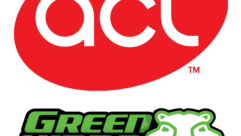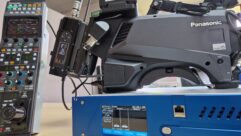Staying Green with Consumer Electronics
Apr 16, 2007 12:00 PM
Click here for more Residential AV news in The Briefing Room.
With Earth Day just around the corner on Apr.22, 2007, electronics recycling and environmental programs are in the spotlight. According to a 2006 Consumer Reports survey, two in 10 consumers who replaced computers or monitors—and three in 10 consumers who disposed of a TV in the past year—treated them as trash. But concerns over the impact of discarded electronics isn’t just an April worry for installers and consumers who are faced with an increasing number of local and state environmental regulations regarding the disposal of potentially toxic consumer electronics products, including televisions, computer monitors, and cellular phones.
Manufacturers have a mixed record when it comes to instituting recycling programs and reducing the amount of harmful materials used in the production of consumer electronics products. Greenpeace released its Green Ranking of PC and cell phone providers early this month, listing Chinese PC producer Lenovo at the top for taking responsibility for its own branded waste. The company, which at one time had been rated last in the Greenpeace review, now offers take-back and recycling programs in all of the countries where its products are sold.
Sony and LG Electronics received low marks for holding double standards on their e-waste takeback policies around the world. According to the Greenpeace report, Sony and LG support individual producer responsibility elsewhere in the world; in the United States, they are part of a coalition opposing producer responsibility laws and call for consumers, instead of manufacturers, to pay for the recycling of discarded electronics.
At the same time, Sony, Panasonic, and other companies have initiated their own recycling efforts in conjunction with states and local agencies. Sony electronics and PC equipment can be recycled free of charge at several Waste Management sites in Minnesota, and Panasonic has worked with more than 25 states in its own recycling programs.
Meanwhile, Sharp took a step forward in TV recycling this month, offering all buyers purchasing a new Sharp LCD TV with a screen size of 37in. or larger through Sharp Direct free recycling of their old TV of equal or greater screen size. The program is under study to be permanent policy for the TV vendor.
To help consumers deal with unwanted electronics and the issues surrounding e-waste, Consumer Reports has launched an environmental website called Greener Choices. The site helps consumers understand the dangers posed by discarded electronics along with alternatives for donating or selling used equipment along with repairing or recycling.
Greener Choices reports that only 11 percent of discarded electronics are currently recycled, according to figures from the Environmental Protection Agency (EPA). Even recycling doesn’t address the dangers that can be posed by discarded electronics, which often wind up in landfill in poor countries around the world. Electronic equipment contains toxic materials, including lead, cadmium, and mercury, that can have harmful effects on soil and ground water when disposed of in landfills. According to the EPA, CRT-based computer and television monitors contain on average 4lbs. to 8lbs. of lead, a highly toxic heavy metal. The EPA says electronic products are the largest single source of lead in municipal solid waste.
A coalition of environmental groups recently established a voluntary program known as the Electronics Recycler’s Pledge of True Stewardship. The recyclers agree not to export hazardous electronic components to developing countries, not to dispose of equipment in municipal landfills or incinerators not equipped to handle it, and not to use prison labor, among other things. The list of member recycling companies can be found at www.ban.org, a service of environmental advocacy group Basel Action Network (BAN).
States have taken varying positions on e-cycling CRTs, according to the EPA. Massachusetts and Florida have streamlined hazardous waste regulations for CRTs, resulting in higher levels of recycling. California tags CRTs as spent materials, regulating them as hazardous waste that’s banned from landfills. Other states are currently developing universal waste exemptions for CRT. Minnesota, for instance, considers CRTs to be electric lamps, which are already part of that state’s Universal Waste Rule. New York utilizes its scrap metal exemption for whole intact CRTs that will be recycled.
The EPA website has a map with e-cycling facilities at www.epa.gov, and the Electronic Industries Association lists nationwide recycling facilities at its website, www.eia.org.










